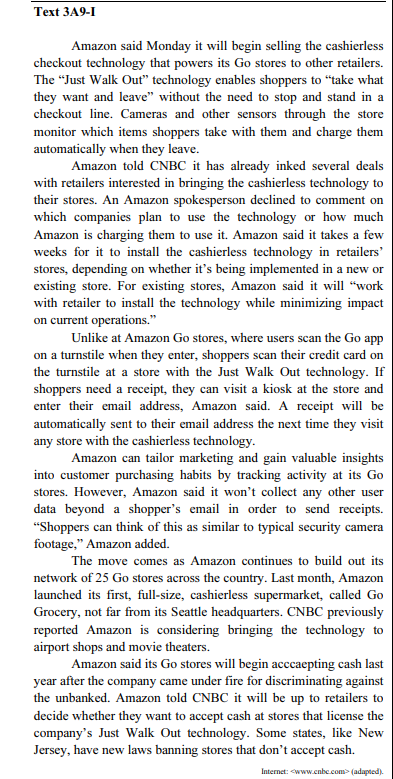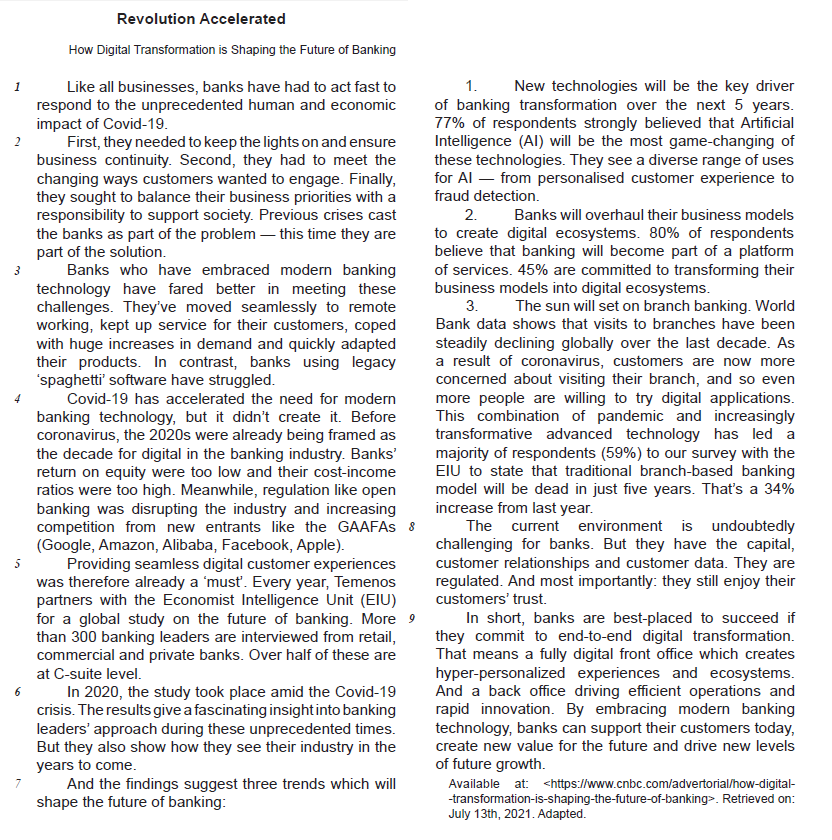How facial recognition technology aids police

Police officers’ ability to recognize and locate individuals with a history of committing crime is vital to their work. In fact, it is so important that officers believe possessing it is fundamental to the craft of effective street policing, crime prevention and investigation. However, with the total police workforce falling by almost 20 percent since 2010 and recorded crime rising, police forces are turning to new technological solutions to help enhance their capability and capacity to monitor and track individuals about whom they have concerns.
One such technology is Automated Facial Recognition (known as AFR). This works by analyzing key facial features, generating a mathematical representation of them, and then comparing them against known faces in a database, to determine possible matches. While a number of UK and international police forces have been enthusiastically exploring the potential of AFR, some groups have spoken about its legal and ethical status. They are concerned that the technology significantly extends the reach and depth of surveillance by the state.
Until now, however, there has been no robust evidence about what AFR systems can and cannot deliver for policing. Although AFR has become increasingly familiar to the public through its use at airports to help manage passport checks, the environment in such settings is quite controlled. Applying similar procedures to street policing is far more complex. Individuals on the street will be moving and may not look directly towards the camera. Levels of lighting change, too, and the system will have to cope with the vagaries of the British weather.
[…]
As with all innovative policing technologies there are important legal and ethical concerns and issues that still need to be considered. But in order for these to be meaningfully debated and assessed by citizens, regulators and law-makers, we need a detailed understanding of precisely what the technology can realistically accomplish. Sound evidence, rather than references to science fiction technology --- as seen in films such as Minority Report --- is essential.
With this in mind, one of our conclusions is that in terms of describing how AFR is being applied in policing currently, it is more accurate to think of it as “assisted facial recognition,” as opposed to a fully automated system. Unlike border control functions -- where the facial recognition is more of an automated system -- when supporting street policing, the algorithm is not deciding whether there is a match between a person and what is stored in the database. Rather, the system makes suggestions to a police operator about possible similarities. It is then down to the operator to confirm or refute them.
By Bethan Davies, Andrew Dawson, Martin Innes (Source: https://gcn.com/articles/2018/11/30/facial-recognitionpolicing.aspx, accessed May 30th, 2020)
Based on the information provided by Text, mark the statements below as true (T) or false (F).
( ) In relation to AFR, ethical and legal implications are being brought up.
( ) There is enough data to prove that AFR is efficient in street policing.
( ) AFR performance may be affected by changes in light and motion.
The statements are, respectively,
How facial recognition technology aids police

Police officers’ ability to recognize and locate individuals with a history of committing crime is vital to their work. In fact, it is so important that officers believe possessing it is fundamental to the craft of effective street policing, crime prevention and investigation. However, with the total police workforce falling by almost 20 percent since 2010 and recorded crime rising, police forces are turning to new technological solutions to help enhance their capability and capacity to monitor and track individuals about whom they have concerns.
One such technology is Automated Facial Recognition (known as AFR). This works by analyzing key facial features, generating a mathematical representation of them, and then comparing them against known faces in a database, to determine possible matches. While a number of UK and international police forces have been enthusiastically exploring the potential of AFR, some groups have spoken about its legal and ethical status. They are concerned that the technology significantly extends the reach and depth of surveillance by the state.
Until now, however, there has been no robust evidence about what AFR systems can and cannot deliver for policing. Although AFR has become increasingly familiar to the public through its use at airports to help manage passport checks, the environment in such settings is quite controlled. Applying similar procedures to street policing is far more complex. Individuals on the street will be moving and may not look directly towards the camera. Levels of lighting change, too, and the system will have to cope with the vagaries of the British weather.
[…]
As with all innovative policing technologies there are important legal and ethical concerns and issues that still need to be considered. But in order for these to be meaningfully debated and assessed by citizens, regulators and law-makers, we need a detailed understanding of precisely what the technology can realistically accomplish. Sound evidence, rather than references to science fiction technology --- as seen in films such as Minority Report --- is essential.
With this in mind, one of our conclusions is that in terms of describing how AFR is being applied in policing currently, it is more accurate to think of it as “assisted facial recognition,” as opposed to a fully automated system. Unlike border control functions -- where the facial recognition is more of an automated system -- when supporting street policing, the algorithm is not deciding whether there is a match between a person and what is stored in the database. Rather, the system makes suggestions to a police operator about possible similarities. It is then down to the operator to confirm or refute them.
By Bethan Davies, Andrew Dawson, Martin Innes (Source: https://gcn.com/articles/2018/11/30/facial-recognitionpolicing.aspx, accessed May 30th, 2020)
In “Until now, however”, the word “however” introduces the notion of
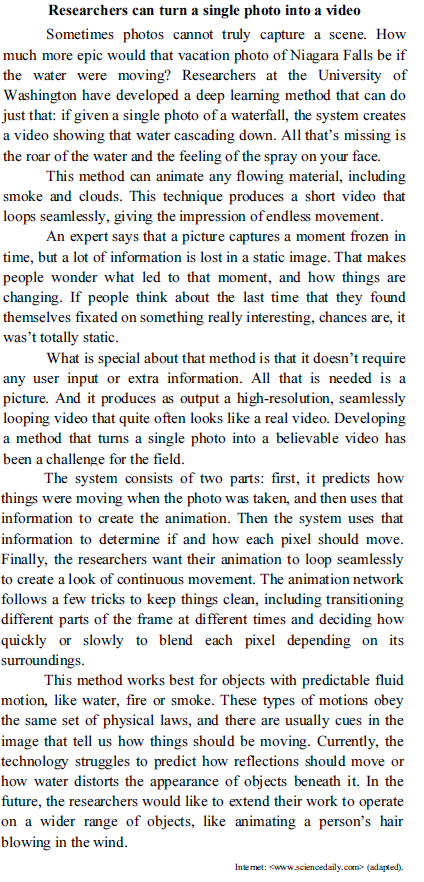
Based on the text above, judge the item below.
One example of what this method can do to the photo is add the sound of the water in a waterfall.
Taking the text 3A9-I into consideration, choose the correct option.
Based on the text above, judge the following item.
According to the view presented in the second paragraph, the main characteristic of police agencies is the competence to deal with potentially harmful circumstances.
Based on the previous text, judge the following item.
In the third paragraph, the author informs that the community dependence on the São Francisco River is limited to a specific area of the river, near to the ocean.
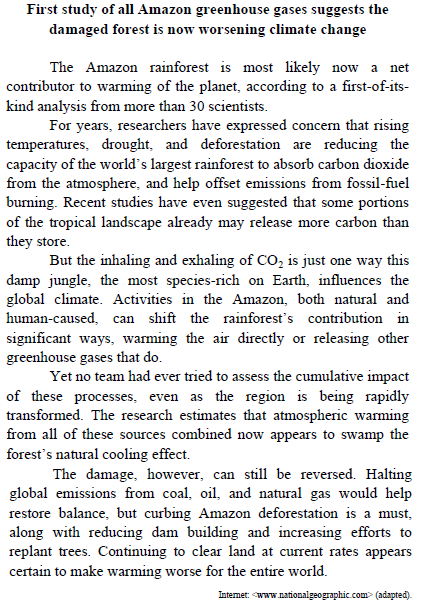
Based on the text above, judge the following item.
It can be inferred from the text that the Amazon rainforest is the only responsible for all recent changes in global climate
According to the second paragraph, the concept of robotic soccer players emerged
From the sentence of the last paragraph, “By embracing modern banking technology, banks can support their customers today, create new value for the future and drive new levels of future growth”, it is inferred that
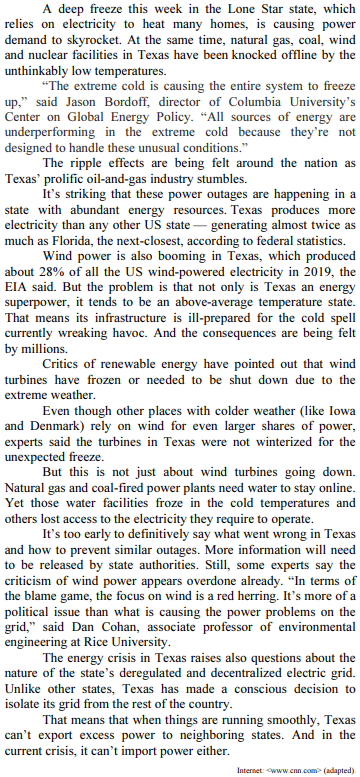
About ideas stated in the text above and the words used in it, judge the following items.
There are other states, like Florida, that produce energy on a level similar to that of Texas
Based on the text above, judge the following item.
In the sentence “The body of officers representing the civil authority of government is known as police” (first paragraph), the word “representing” could be correctly replaced both with the phrase which represents and which represent, although each option has a slightly different meaning.
Based on the text above, judge the following item.
It can be inferred from the text that policing has been object of academic interest.
Based on the previous text, judge the following item.
In “The landscape where the São Francisco River enters the Atlantic Ocean seems so out of place it makes one wonder if this is still coastal Brazil” (first paragraph), the word “one” means one specific special person.

Based on the text above, judge the following item.
It can be concluded from the last paragraph that it is necessary to curb Amazon deforestation.
In paragraph 9, there is the information that in RoboCup competitions the game referee and the team coaches are

